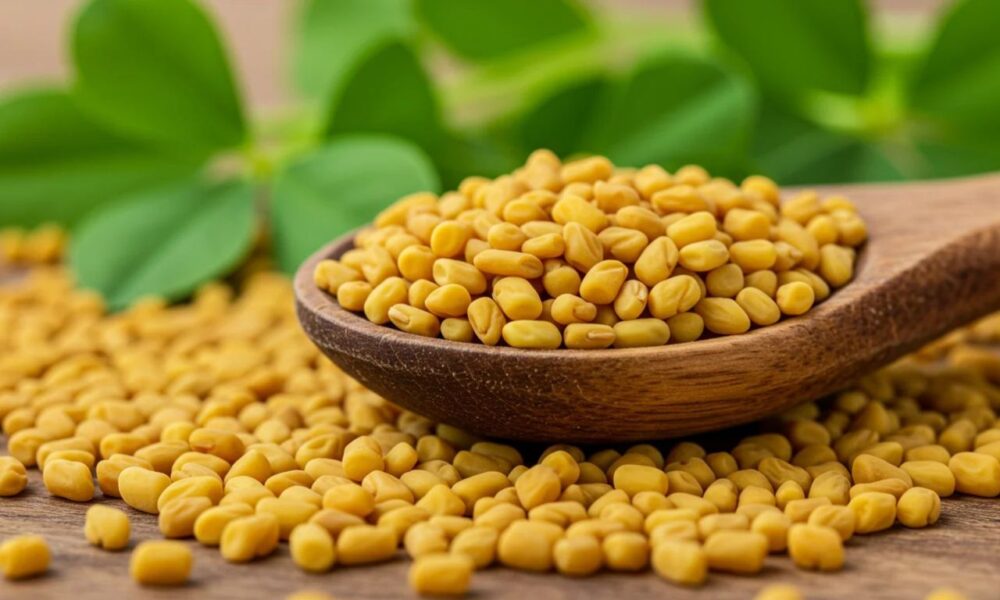Foenegriek, also known as fenugreek, is a spice that has quietly made its way back into the culinary spotlight. With its distinct sweet and nutty flavor profile, this ancient herb is capturing the hearts (and taste buds) of chefs and health enthusiasts alike. But foenegriek isn’t just a trendy ingredient; it boasts a rich history steeped in tradition and numerous health benefits. As more people seek natural remedies and flavorful additions to their meals, foenegriek is stepping out from the shadows of obscurity to take center stage once again. Curious about what makes this spice so special? Let’s dive deeper into the world of foenegriek!
The History and Origin of Foenegriek
Foenegriek, also known as fenugreek, has a rich history that dates back thousands of years. Its origins trace back to the Mediterranean region and parts of Asia, where it was cherished for both culinary and medicinal purposes.
Ancient Egyptians revered foenegriek as a sacred herb. They used it in rituals and even in embalming practices due to its aromatic properties. The spice made its way through trade routes, captivating cultures from India to Greece.
In traditional Indian medicine, Ayurveda, foenegriek has been utilized for its health benefits for centuries. This ancient spice found mention in various texts dating back over 2,000 years.
The allure of foenegriek continues today as people rediscover this versatile ingredient’s potential. Its journey through time illustrates how deeply intertwined food and culture can be.
Health Benefits of Foenegriek
Foenegriek, often known as fenugreek, is more than just a spice. It holds a treasure trove of health benefits that have garnered attention in recent years.
Rich in fiber and antioxidants, it can aid digestion and promote gut health. Many people find relief from digestive issues like bloating by incorporating this ancient herb into their diets.
It’s also renowned for its anti-inflammatory properties. This makes foenegriek an excellent choice for those dealing with inflammatory conditions.
Furthermore, some studies suggest that it may help regulate blood sugar levels, making it particularly beneficial for diabetics or those looking to manage their weight effectively.
Additionally, foenegriek has been linked to enhanced lactation in nursing mothers. Its nutrient-rich profile supports overall well-being and vitality too.
Culinary Uses of Foenegriek
Foenegriek, or fenugreek, is a versatile spice that brings warmth and depth to various dishes. Its slightly bitter taste adds complexity to curries, lentil soups, and stews. Just a sprinkle can elevate your favorite comfort food.
Baking enthusiasts love foenegriek too. It infuses bread and pastries with an aromatic touch that pairs well with honey or molasses.
For those venturing into the world of pickling, this spice is a fantastic addition to brines—contributing both flavor and health benefits.
In Middle Eastern cuisine, you’ll find it in dishes like shawarma or falafel mix. The nutty notes of foenegriek complement roasted vegetables beautifully as well.
Experimenting with this ancient spice can lead to delightful new creations in your kitchen!
Incorporating Foenegriek into Your Diet
Incorporating foenegriek into your diet can be both enjoyable and beneficial. Its nutty flavor adds depth to various dishes, making it a versatile ingredient.
Start with small amounts in smoothies or yogurt. A sprinkle of foenegriek powder enhances the taste while boosting nutrition.
For savory meals, use whole seeds to infuse curries or soups. They release their aroma when toasted briefly, enhancing any dish’s profile.
Baking? Mix foenegriek into bread dough for an interesting twist that promotes healthy digestion.
Don’t overlook its role in homemade spice blends or marinades. It pairs well with spices like cumin and coriander for added warmth.
Experimenting is key; try adding it to salads or as a seasoning on roasted vegetables. The possibilities are endless when you let creativity lead!
Alternative Uses of Foenegriek
Foenegriek, also known as fenugreek, extends its utility beyond the kitchen. This versatile herb has been used in traditional medicine for centuries. Its seeds are often brewed into a tea that can help soothe digestive issues and promote lactation in nursing mothers.
Additionally, foenegriek is gaining attention in skincare routines. The seeds can be ground into a paste and applied to the skin to combat acne and inflammation. Many beauty enthusiasts appreciate its natural properties for nurturing hair health as well; it’s said to strengthen hair follicles and enhance shine.
Moreover, foenegriek’s aroma makes it a great addition to homemade candles or potpourri blends. Infusing oils with this spice adds an intriguing scent profile that many find appealing.
With such diverse applications, it’s clear that foenegriek offers much more than just flavor enhancement for your meals.
Where to Find and How to Store Foenegriek
Foenegriek, or fenugreek, can be found in various forms—seeds, powdered spice, and even fresh leaves. Most supermarkets carry the seeds and ground powder in the spice aisle. Health food stores often stock organic varieties as well.
If you’re looking for something a bit more specialized, consider checking out local Indian or Middle Eastern markets. These places typically offer fresher options at competitive prices.
When it comes to storage, keep foenegriek seeds in an airtight container away from light and heat. A cool pantry shelf works perfectly for this purpose.
For ground foenegriek powder, use a similar approach but try to consume it within six months for optimal flavor. If you buy fresh leaves, treat them like any other herb: wrap them lightly in a damp paper towel and store them in the fridge to maintain their freshness longer.
Conclusion
Foenegriek, often known as fenugreek, boasts a rich history and a myriad of benefits that resonate with modern health enthusiasts. From its ancient origins to contemporary culinary uses, this spice is making waves in kitchens around the world.
Its health benefits are impressive. Foenegriek may aid digestion, support blood sugar management, and even enhance lactation for nursing mothers. The dietary incorporation of foenegriek can be as simple as adding it to curries or smoothies. Its slightly bitter taste adds depth while providing nutritional advantages.
Beyond cooking, foenegriek shines in alternative applications too. It’s used in cosmetics and herbal remedies, showcasing its versatility far beyond just flavoring food.
Finding quality foenegriek is easier than ever; local markets and online retailers offer various forms from seeds to powders. Proper storage will ensure its potency remains intact—keep it cool and dry.
As interest continues to grow around this ancient spice, it’s clear that foenegriek has carved out a place not only on our plates but also within our wellness routines. Embracing could very well lead you into a world filled with flavor and potential health rewards waiting to be discovered.

